detail profile riad sattouf

Riwayat Hidup
Riad Sattouf (Arabic: رياض سطوف; born 5 May 1978) is a French cartoonist, comic artist, and film director.
Sattouf is best known for his award-winning graphic memoir hexalogy L'Arabe du futur (The Arab of the Future) and for his award-winning film Les Beaux Gosses (The French Kissers).
He also worked for the satirical French weekly Charlie Hebdo for ten years, from 2004 to mid-2014, publishing drawing boards of one of his major works La vie secrète des jeunes.
Riad Sattouf was born in Paris, to a Syrian father and French mother, and spent his childhood in Libya and Syria, then returned to France to spend his teenage years in Brittany, studying in Rennes.
An avid reader of cartoon books and periodicals, sent to him by his grandmother, he was fascinated by them.
Although he was studying to become a pilot, he applied to study at École Pivaut and then Gobelins L'Ecole de L'Image to study animation.
The famous cartoonist Olivier Vatine noticed his talent and introduced him to Guy Delcourt, the owner of Delcourt, a publisher specializing in cartoons.
Delcourt published Sattouf's first book Petit Verglas based on a story line by Éric Corbeyran.
In a unique personal and humorous style, he narrated his own adolescent life observations in Manuel du puceau and Ma Circoncision published by Bréal Jeunesse Publishing House owned by Joann Sfar.
The books were later reprinted by L'Association Publishing House.
In Ma circoncision, he denounced circumcision as a cruel and absurd act, superimposed on the context of the socio-political life in his ancestral Syria in the 1980s.
He then published the Jérémie series in the cartoon collection Poisson Pilote published by Dargaud, resulting in three books of the series.
Jérémie is the story of a young sentimental and unstable youth growing to adulthood and is very autobiographical.
It also appeared in No sex in New York in 2004 on the initiative of the French left-wing daily Libération.
In 2005 he published Retour au collège, an observational study of adolescents in a Parisian middle school, which was a big success.
Meanwhile, Sattouf developed the fictional character Pascal Brutal, an embodiment of pure virility.
The comedic Pascal Brutal series imagines France of the near-future as an anarchic, neoliberal dystopia where the hero's outlandish machismo is given free rein.
From 2004 to 2014, he published a weekly strip in the satirical French weekly Charlie Hebdo entitled "La vie secrète des jeunes", recounting anecdotal observations of young people in public places.
He likened the strip to a fly-on-the-wall nature documentary, and rendered the speech of his subjects with careful attention to sociolinguistic variation.
The strips have been republished in three volumes, one in 2007, the second in 2010 and the last one in 2013.
In late 2014, he left Charlie Hebdo and moved to Le Nouvel Obs, a weekly magazine, with a new strip called Les cahiers d'Esther (Esther's notebooks), based on true stories told to him by Esther A.
, a girl who was 9 years old when the strip started.
Sattouf also experimented with film dubbing by giving his voice to a cartoon character in Petit Vampire designed by his friend, cartoonist Joann Sfar.
.
.
.
Source: Article "Riad Sattouf" from Wikipedia in English, licensed under CC-BY-SA 3.
0.
Info Pribadi
Peran Yang Di Mainkan Riad Sattouf
 Once upon a time a poor...
Once upon a time a poor...The Most Precious of Cargoes 2024
Once upon a time, a poor woodcutter and his wife lived in a great forest. Cold, hunger, poverty, and a war raging all around them meant their lives were very hard. One day, the woodcutter's wife rescues a baby. A baby girl thrown from one of the many trains that constantly pass through the forest. This baby, this "most precious of cargoes", will transform the lives of the poor woodcutter's wife and her husband, as well as those whose paths the child will cross—including the man who threw her from the train. And some will try to protect her, whatever the cost. Their story will reveal the worst and the best in the hearts of men.
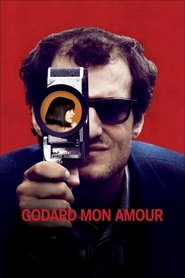 In 1967 during the making of La...
In 1967 during the making of La...Godard Mon Amour 2017
In 1967, during the making of “La Chinoise,” film director Jean-Luc Godard falls in love with 19-year-old actress Anne Wiazemsky and marries her.
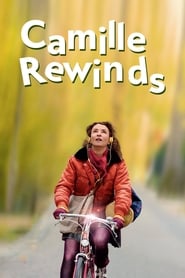 Camille was only sixteen and still...
Camille was only sixteen and still...Camille Rewinds 2012
Camille was only sixteen and still in high school when she fell in love with Eric, another student. They later married and a child and were happy for a while. But now twenty-five years have passed and Eric leaves her for a younger woman. Bitter and desperate Camille drinks so much liquor at a New Year Eve's party that she falls into an ethylic coma and she finds herself... propelled into her own past! Camille is sixteen again when she wakes up this morning, her parents are not dead anymore and she must go to school, where she will meet her schoolmates and, of course, Eric. Is she going to fall for him again and... be miserable twenty-five years later? Or will she avoid him with the result never having her beloved daughter? Who ever said that time traveling was fun?
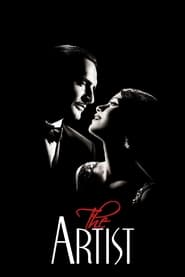 Hollywood 1927 As silent movie star George...
Hollywood 1927 As silent movie star George...The Artist 2011
Hollywood, 1927: As silent movie star George Valentin wonders if the arrival of talking pictures will cause him to fade into oblivion, he sparks with Peppy Miller, a young dancer set for a big break.
 Romo and Juliette are two young...
Romo and Juliette are two young...Declaration of War 2011
Roméo and Juliette are two young actors. They fall in love at first sight, move in together and make a baby. A love story and the founding of a home like millions of others. Except that their little boy, Adam, behaves abnormally. The young parents try hard to persuade themselves that everything is okay but, with the passing of time, they cannot delude themselves anymore: their son has a problem. From now on, war is declared. A war against illness. A war against Death. A war against despair.
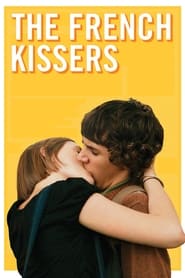 An awkward adolescent boy and his...
An awkward adolescent boy and his...The French Kissers 2009
An awkward adolescent boy and his angst-ridden friends try their best to fit in amongst a cast of varied characters.
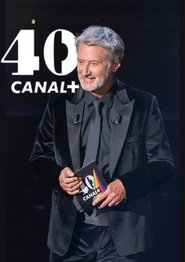 Primetime special to celebrate 40 years of...
Primetime special to celebrate 40 years of... Rita Cerveau Brain the most intelligent...
Rita Cerveau Brain the most intelligent... In a country where women are...
In a country where women are...